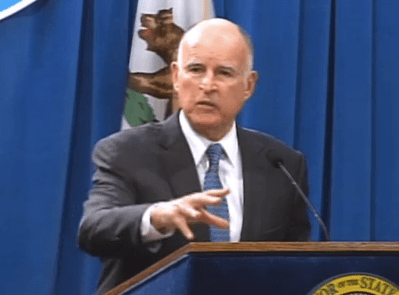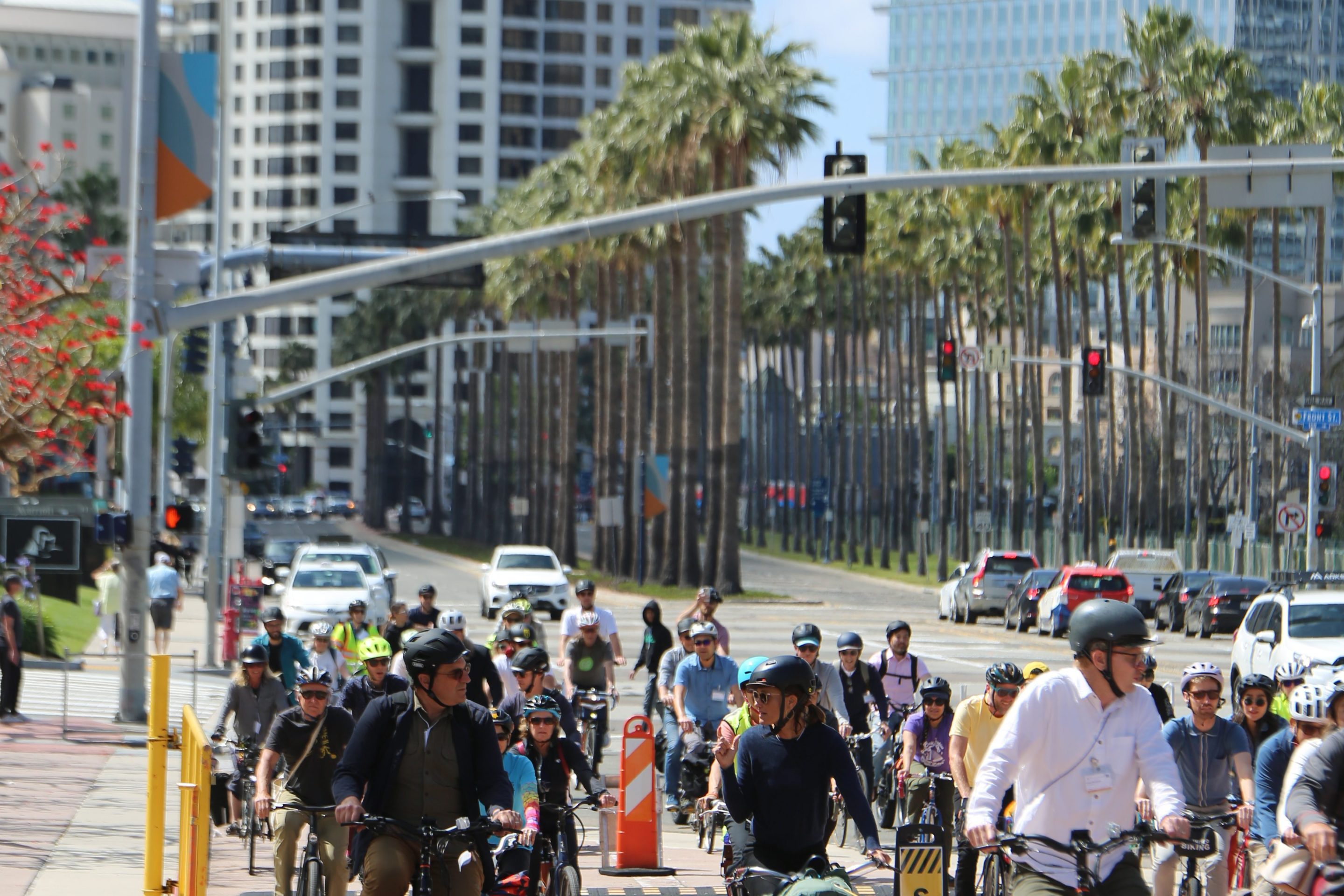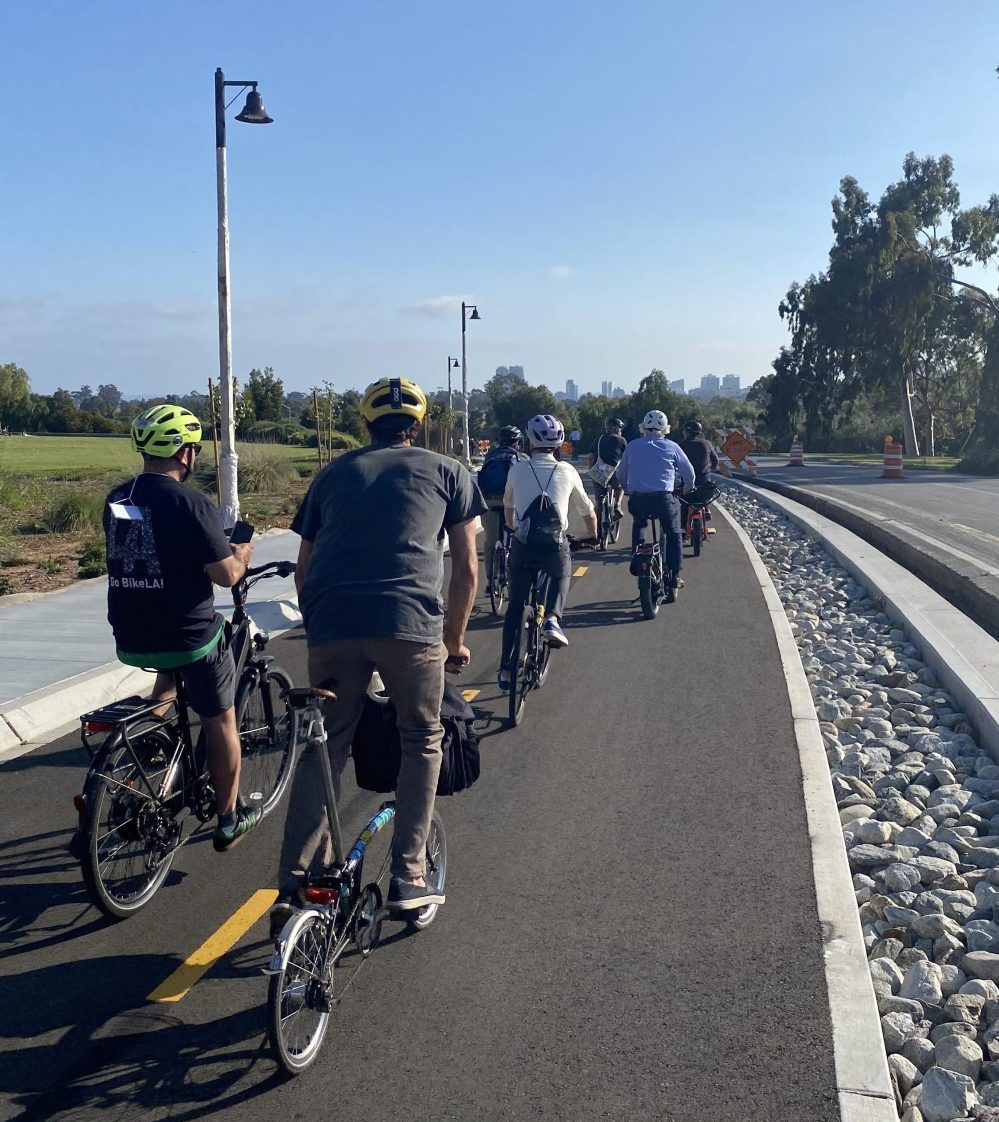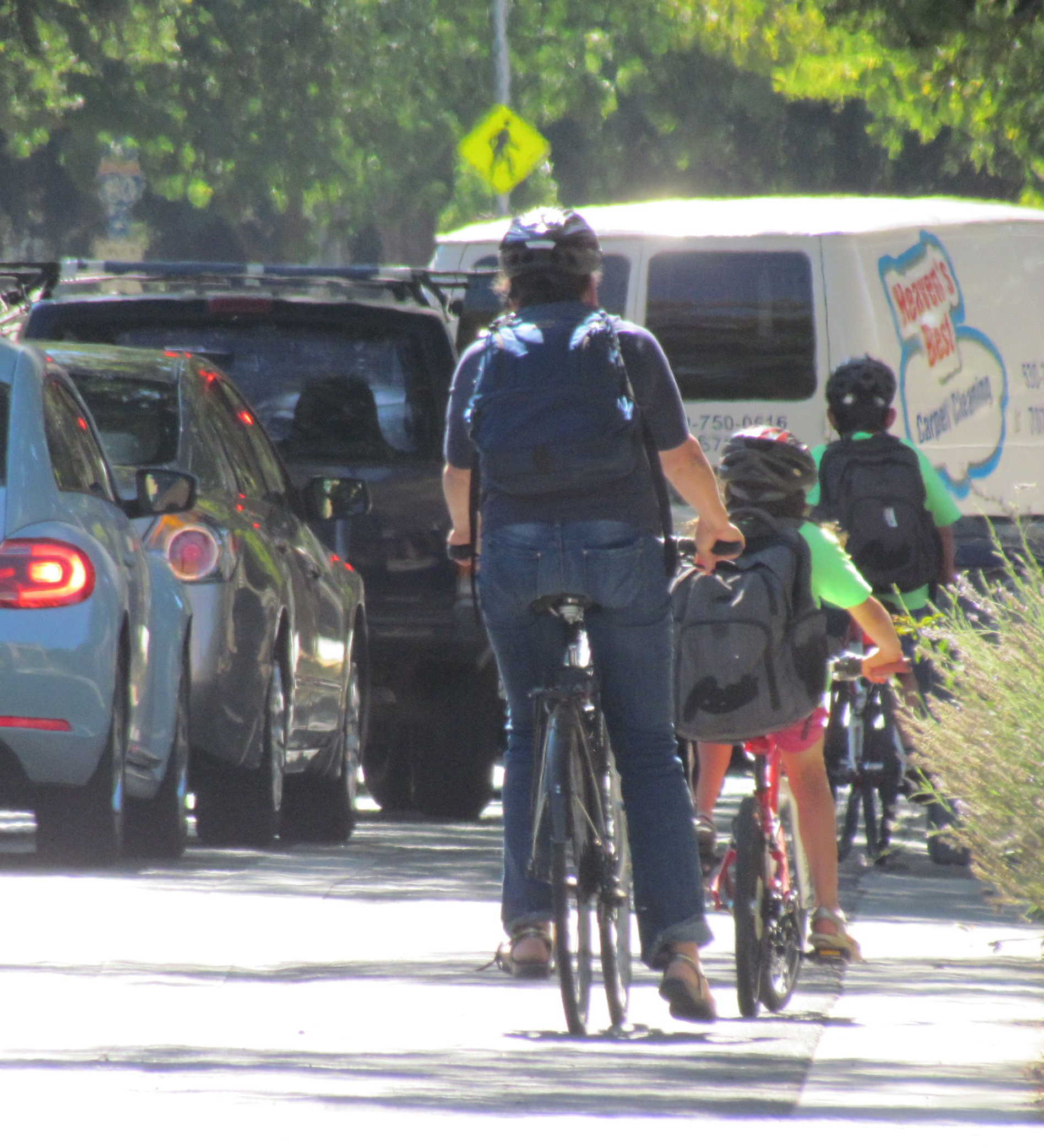Yesterday, Governor Jerry Brown released his proposed budget for the State of California for fiscal year 2017-18, and it includes a substantial increase for walking and bicycling projects via the state's Active Transportation Program.
Last year Brown had proposed funding what he called a “Low Carbon Roads” program that remained largely undefined throughout the budget process and ultimately disappeared. This year, he instead is proposing to expand the already established ATP, which builds infrastructure and improves facilities for people who travel by bike or by foot, by $1 billion over ten years.
Outside of the increase for walking and bicycling, Brown's proposed budget largely shows the usual fiscal restraint for which he is well known. In fact, he used the same charts he used last year to illustrate why it's necessary to keep costs down. In addition to the cyclical nature of finances, the state faces looming uncertainties from the incoming federal administration. A huge chunk of the California budget comes from the federal government.
“We're dealing with too many uncertainties that could put a massive hole in our revenue projections,” said Brown, liking the process to “riding the tiger.” “We're in very uncertain times.”
A coalition of bicycle, pedestrian, and health advocacy groups issued a statement applauding this increase, which acknowledges the importance of encouraging these healthy travel modes. The allocation would nearly double the current ATP, although it still would not meet "the unrelenting demand for these investments at the local level, totaling over $1 billion in requests annually," according to the statement, from the California Bicycle Coalition, California Walks, Safe Routes to Schools, Climate Plan, and the American Heart Association.
The new ATP funding will come from the state's cap-and-trade program, not from new sources of revenue proposed by Brown in the budget. Those new sources of transportation funding, said Brown, will depend on cooperation across party lines and interest groups. But the increased funding for the ATP, as well as a proposed $400 million for the Intercity Transit and Rail Capital Program, will hinge on the passage of the state's cap-and-trade program by a two-thirds vote. Brown said he is committed to making that happen, because he wants to eliminate any uncertainty about the program's future. That should also help reduce the volatility of recent cap-and-trade auctions, which have not been very strong.
“It's an important program,” Brown said of cap-and-trade, “although it's not the whole response [to climate change]. It generates important funds. I'm going to work hard to win legislative approval for it.” He pointed out that California is not alone in its fight against climate change, and that the state's cap-and-trade program is “part of worldwide coalition of efforts. We ought to continue and not fall back in our efforts,” he said.
The transportation portion of the budget includes increased revenue of about $43 billion over ten years, from a variety of sources that have been proposed by the governor and the legislature in various forms over the last few years. A new vehicle fee called a “road improvement charge” is expected to generate $2.1 billion per year. “Caltrans efficiencies” are supposed to create $100 million per year that can be spent on other needs, and of course there's the cap-and-trade revenue, of which an extra $500 million per year would go to the Active Transportation Program and the Transit and Intercity Rail Capital Program, on top of what's already allocated by law.
TransForm, a Bay Area nonprofit working on increasing sustainable transportation choices, issued a statement pointing out that while this investment in transit is encouraging, it's not enough to rely on money from cap-and-trade:
We cannot count on climate funds alone to meet our public transportation needs, and we are disappointed that none of the new transportation revenue is allocated to transit. We are also concerned that this money is entirely focused on transit capital. We need greater investment in operations funding to keep buses and trains running once they are built, and we need to dedicate long-term transportation funding sources to public transit.
Brown also proposes raising gas taxes—or rather, fixing them to the point where they were at their highest in recent years, at 21.5 cents per gallon in 2013—as well as diesel taxes. He proposed a similar, if lesser, increase last year. Two pending transportation bills also propose raising fuel taxes. The usual anti-tax voices, including Board of Equalization member George Runner, have already begun to weigh in that funding source.
Another bright spot for sustainable transportation: Brown's budget proposes an increase of $25 million per year for competitive grants to help local governments create stronger sustainable transportation plans as required by SB 375. That law requires regions to plan transportation and land use in ways that reduce driving, and thus greenhouse gases, but many areas need help figuring out how to do so.
About six percent of the entire budget is for transportation expenditures. That's $18 billion or so to transportation, including all the departments that work under the umbrella of the California State Transportation Agency—the largest being Caltrans, the DMV, the CHP, and the High Speed Rail Authority.
What remains to be seen is whether the bulk of the new funding, slated for roads and trade corridors, will help the state reach its climate goals or continue to encourage single-occupant car trips. Brown has repeatedly stated that fighting climate change is a priority for him. Investing in rail and transit is important, but this budget continues the state's practice of focusing transit investments on building new projects, while money for operations is just as necessary to make transit a usable alternative for more people.
TransForm also points out that the budget
does little to address social equity concerns regarding transportation, and it makes no meaningful connection between transportation funding and climate change. It is in stark contrast to the Governor’s bold statements on climate action that the third-largest transportation funding program, STIP, which funds significant freeway expansions, continues to contain no climate or equity requirements.
The Governor's proposal will be heard and discussed until May, at which time he will issue his "May Revise." By law, the legislature must pass a budget by the last day of June 2017.





